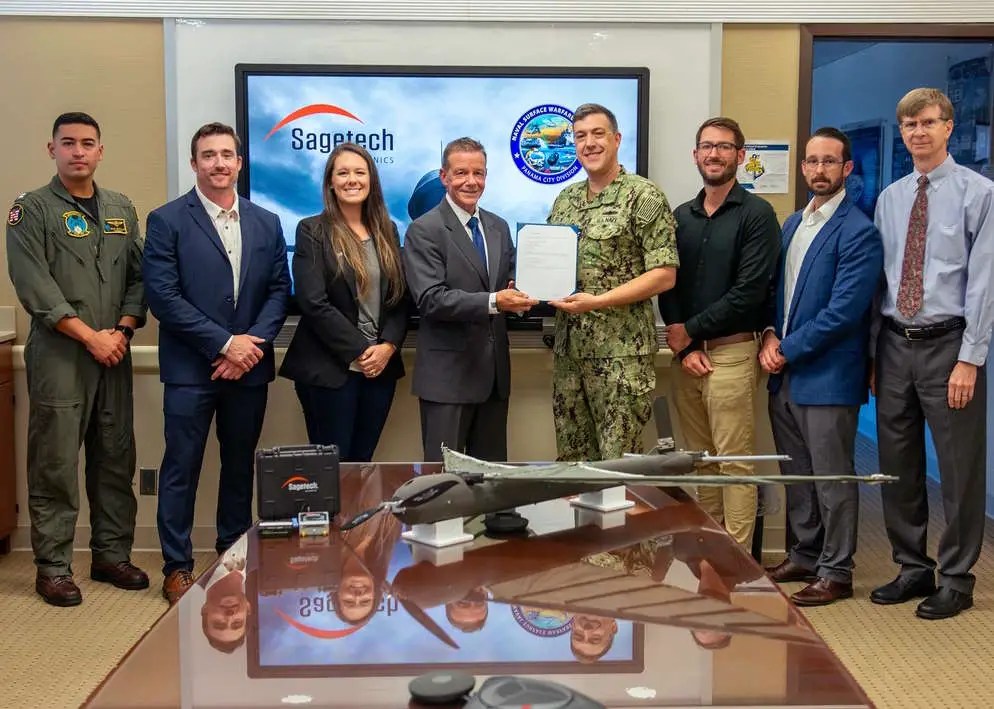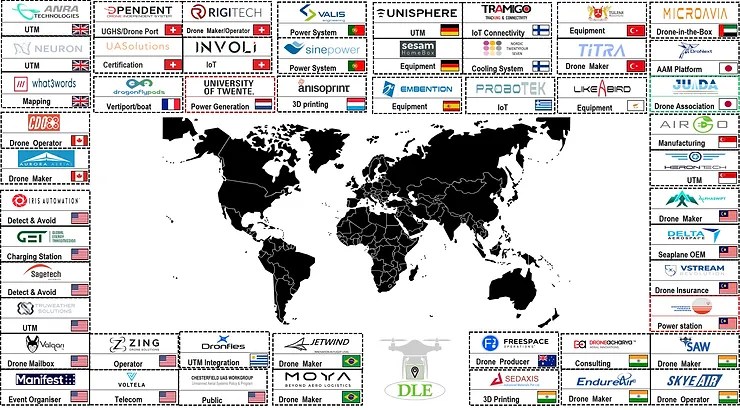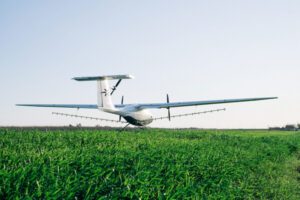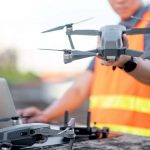In recent years, the commercial uses of drones have skyrocketed, with the global market for drone-based services projected to reach $127 billion by 2020. From agriculture and construction to delivery and emergency services, commercial drone technology is revolutionizing how we live and work. But what are the specific ways that commercial drones are impacting the world?
In this article, we’ll take a closer look at seven industries being transformed by this technology, exploring the benefits and drawbacks of commercial drones. From crop mapping and package delivery to wildlife monitoring and live broadcasting, you’ll be amazed at how commercial drones shape the world around us.
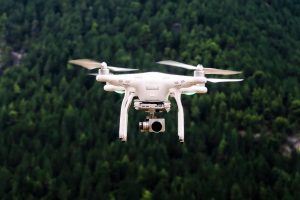
How do commercial drones work?
Commercial drone parachute, also known as Unmanned Aerial Vehicles (UAVs), are becoming increasingly popular in various industries, from delivery and logistics to agriculture and construction. But how exactly do these versatile machines work? The main components of a commercial drone include the drone body, which houses the flight controller, motors, and batteries, motors, which provide lift and propulsion.
You’ll also find the flight controller, the drone’s brain, responsible for controlling the motors, propellers, and other systems, and Cameras and sensors, such as high-resolution cameras, thermal cameras, or LiDAR sensors, depending on their intended use.
The flight controller commands the motors to spin the propellers at high speed to achieve lift. This creates airflow over the drone’s wing, generating lift and allowing it to take off. To move forward, backward, left, or right, the flight controller commands the motors to adjust the speed of the propellers, creating an imbalance in the thrust, which propels the drone in the desired direction.
The flight controller uses information from the GPS and other sensors to determine the drone’s altitude and maintains this altitude by adjusting the speed of the propellers. Additionally, the flight controller uses information from sensors such as gyroscopes and accelerometers to keep the drone stable during flight, adjusting the speed of the propellers as necessary to correct any changes in the drone’s attitude.
Several types of software can be used to control and operate them. Flight control software runs on the drone’s flight controller and controls the motors, propellers, and other systems to achieve the desired flight behavior. Ground control software runs on a computer or mobile device and plans and executes the drone’s mission. It allows the operator to set waypoints, adjust the drone’s flight parameters, and view telemetry data in real time.
Data processing software is used to process and analyze the data collected by the drone’s cameras and sensors, such as image recognition and analysis software. These physical and software components make commercial drones versatile in several industries.

-
Construction and Architecture
Drones can be used in construction and architecture in several ways, including;
- Surveying and mapping land. Drones equipped with high-resolution cameras and lidar sensors can quickly and accurately survey large areas of land, providing architects and engineers with detailed topographical and vegetation data that is essential for building design and site planning.
- Inspecting buildings and bridges. Drones equipped with thermal cameras and other sensors can examine the structural integrity of buildings and bridges, identifying areas that need repairs or maintenance. This helps to increase safety, reduce costs and improve the efficiency of construction projects.
- Progress monitoring and site management. Drones can regularly capture aerial footage of construction sites, providing project managers with real-time data on the progress of a project. This can identify areas where work is behind schedule, ensuring that projects are completed on time and within budget.
Benefits of Using Drones in Construction and Architecture
- Improved safety for workers. Drones can be used to access areas of a construction site that are difficult or dangerous for workers to reach, such as the tops of buildings or bridges. This reduces the risk of injury or accidents for workers.
- Increased accuracy and efficiency. Drones equipped with high-resolution cameras and sensors can quickly and accurately survey large areas of land or buildings, providing architects and engineers with detailed data essential for building design and site planning. This increase in accuracy helps to improve the efficiency of construction projects.
- Reduced costs. Drones can be used to reduce labor costs associated with traditional surveying and inspection methods. The use of drones can also help identify problems early on, reducing the need for costly repairs or delays in construction projects.
2. Agriculture
- Crop mapping and monitoring. Drones equipped with cameras and sensors can fly over fields and capture high-resolution images of crops, providing farmers with detailed information on crop growth, health, and yields. This data can be used to optimize planting and harvesting, identify problem areas and improve crop management.
- Spraying and fertilizing crops. Drones equipped with spraying equipment can apply pesticides, herbicides, and fertilizers to crops, reducing the time and labor needed to cover large land areas. This can improve crop yields and reduce the environmental impact of farming practices.
- Livestock monitoring. Drones equipped with cameras and sensors can be used to monitor the health and behavior of livestock, allowing farmers to identify problems early on and take action to improve the well-being of their animals.
Benefits of Using Drones in Agriculture
- Increased efficiency and cost savings. Drones can quickly and accurately cover large areas of land, reducing the time and labor needed for crop mapping, spraying, and monitoring livestock. This can lead to cost savings for farmers.
- Improved crop yields. The detailed data provided by drones can be used to optimize planting and harvesting, identify problem areas and improve crop management, leading to improved crop yields.
- Reduced use of pesticides and chemicals. Drones can precisely apply pesticides, herbicides, and fertilizers, reducing the number of chemicals needed and reducing the environmental impact of farming practices.
3. Delivery and Logistics
- Package delivery. Drones can quickly and efficiently deliver packages, reducing delivery times and costs. This can be especially useful in remote or difficult-to-access areas.
- Inventory management. Drones equipped with cameras and sensors can be used to perform regular inventory checks, quickly and accurately identifying stock levels and identifying any discrepancies. This can help to improve inventory management and reduce costs.
- Search and rescue missions. Drones equipped with cameras and sensors can search for missing persons or locate survivors during a disaster. Drones’ speed and efficiency can help reduce response times and improve the chances of a successful rescue.
Benefits of Using Drones in Delivery and Logistics
- Faster delivery times. Drones can quickly and efficiently deliver packages, reducing delivery times and costs.
- Increased efficiency and cost savings. Drones can be used to perform regular inventory checks, quickly and accurately identifying stock levels and identifying any discrepancies. This can help to improve inventory management and reduce costs.
- Improved safety for workers. Drones can be used to perform dangerous or challenging tasks, such as delivering packages in remote or difficult-to-access areas.
4. Emergency Services
- Search and rescue operations. Drones equipped with cameras and sensors can quickly and efficiently search for missing persons or locate survivors during a disaster. Drones’ speed and efficiency can help reduce response times and improve the chances of a successful rescue.
- Disaster response. Drones equipped with cameras and sensors can quickly survey and assess the damage caused by natural disasters such as hurricanes, floods, and earthquakes. This can help emergency responders more effectively allocate resources and plan recovery operations.
- Traffic management. Drones can monitor traffic and identify areas of congestion or accidents, allowing emergency responders to manage traffic flow more quickly and effectively.
Benefits of Using Drones in Emergency Services
- Improved safety for workers and responders. Drones can access difficult or dangerous areas for workers or responders, reducing the risk of injury or accidents.
- Increased efficiency in emergency operations. Drones can quickly and efficiently survey and assess the damage caused by natural disasters, reducing response times and improving the chances of a successful rescue. 5. Media and Entertainment
- Live broadcasting. Drones equipped with cameras can capture live aerial footage of sporting events, concerts, and other live events, providing audiences with unique and exciting perspectives.
- Film and television production. Drones equipped with cameras can capture stunning aerial footage for film and television productions, providing directors and producers with a new tool for storytelling.
- Virtual reality and augmented reality experiences. Drones can capture live footage of real-world locations, which can then be used to create virtual and augmented reality experiences.
Benefits of Using Drones in Media and Entertainment
- Improved audience engagement. Drones can capture live aerial footage of sporting events, concerts, and other live events, providing audiences with unique and exciting perspectives.
- Increased creativity and storytelling possibilities. Drones can capture stunning aerial footage for film and television productions, providing directors and producers with a new tool for storytelling.
6. Wildlife Monitoring and Conservation
- Surveying and counting wildlife. Drones equipped with cameras and sensors can quickly and efficiently survey large land areas, providing conservationists with detailed data on wildlife distribution and population size.
- Monitoring wildlife behavior and habitat. Drones equipped with cameras and sensors can monitor the behavior and habitat of wildlife, providing valuable information for conservation efforts.
- Anti-poaching efforts. Drones equipped with cameras and sensors can patrol large areas of land, helping to detect and deter poaching activities.
Benefits of Using Drones in Wildlife Monitoring and Conservation
- Increased accuracy and efficiency. Drones equipped with cameras and sensors can quickly and efficiently survey large land areas, providing conservationists with detailed data on wildlife distribution and population size.
- Improved understanding of wildlife behavior and habitat. Drones can be used to monitor the behavior and habitat of wildlife, providing valuable information for conservation efforts.
- Reduced human impact on wildlife. Drones can patrol large areas of land, helping to detect and deter poaching activities and reducing the human impact on wildlife populations.
7. Surveying
Drones equipped with cameras and sensors can quickly and accurately measure the volume of materials on a construction site, such as sand, gravel, or asphalt stockpiles. This can help construction companies more efficiently estimate the materials needed for a project and minimize waste.
Drones equipped with thermal cameras can identify thermal bridges, leaks, or potential issues in the building’s envelope and facades. This kind of inspection can be performed before, during, and after the construction phase to evaluate the quality of the work and detect issues that may cause problems in the future.
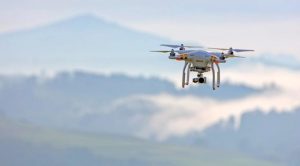
5 Tips to Make the Most of Your Commercial Drone
Here are five tips for making the most of your commercial drone:
1. Invest in High-quality Equipment
A high-quality drone with advanced features such as GPS, obstacle avoidance, and a stable flight platform can make a big difference in the quality of data and images you can collect. Additionally, investing in high-quality cameras and sensors can provide better image quality, enabling you to make more accurate and precise measurements.
2. Use the Right Software
Having the right software can make a big difference in your ability to effectively process, analyze, and interpret the data and images collected by your drone. Be sure to invest in software that can handle the specific types of data you will be collecting and has the tools you need to make the most of it.
3. Plan Your Missions Carefully
Careful planning is essential when making the most of your commercial drone. Before you launch, ensure you clearly understand your goals, the type of data you need to collect, and any potential hazards or challenges you might encounter. Also, consider the weather and ensure your drone can fly in the conditions you expect.
4. Get the Proper Training
Operating a commercial drone is more complex than flying a toy drone; proper training is crucial to get the best results. Invest in the right training to learn the appropriate drone flying techniques and the best data collection and analysis practices.
5. Regular Maintenance
To make the most of your commercial drone, it’s essential to keep it well-maintained. Regularly check the drone’s components and systems, such as the motors, propellers, and batteries, and make sure they are in good working order. Having a preventative maintenance schedule can prolong the lifespan of your equipment and minimize the chances of unexpected failures.
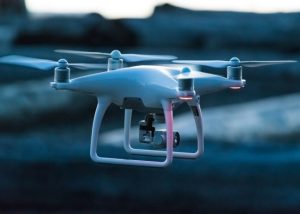
Final Thoughts
Commercial drones are increasingly becoming a valuable tool in various industries, from delivery and logistics to agriculture and construction. With the proper equipment, software, and training, drones can provide efficient and cost-effective solutions for site inspections, surveying, mapping, crop monitoring, and livestock monitoring.
However, when using drones, it’s essential to consider potential drawbacks and challenges, such as weather conditions, regulations, and privacy concerns. By following the tips discussed in this article, companies and organizations can ensure that they are making the most of their commercial drones and realizing the full potential of this powerful technology. As technology and regulations evolve, we expect to see more applications and innovations in using drones in various industries.

